#Program Development Jobs Nairobi
Explore tagged Tumblr posts
Text
5 Vacancies Open at International Rescue Committee
Current Job Openings MEAL Coordinator Locations: 2 locations (not specified) Category: Data & Analytics Job ID: req57961 Work Type: Hybrid Role: Provide technical assistance, capacity sharing, and ongoing mentoring/training in MEAL concepts for IRC and partners. Grants Coordinator Locations: 3 locations (not specified) Category: Grants & Partnerships Job ID: req57802 Work Type: Hybrid Role:…
#5 Vacancies Open at International Rescue Committee#Administrative Assistant Jobs Nairobi#Climate Resilience Jobs Nairobi#community health jobs kenya#Early Childhood Education Jobs Kenya#Humanitarian Aid Jobs Kenya#International Rescue Committee Careers Nairobi#International Rescue Committee Employment Kenya#International Rescue Committee Job Vacancies#International Rescue Committee Open Positions#International Rescue Committee Recruitment 2025#IRC Careers#IRC Job Openings Kenya#Jobs at International Rescue Committee Kenya#monitoring and evaluation jobs kenya#Nairobi NGO Jobs 2025#NGO Job Opportunities Kenya#NGO Jobs In Kenya#Program Development Jobs Nairobi#Protection Assistant Jobs Nairobi
0 notes
Text
Entrepreneur creates career pathways with MIT OpenCourseWare
New Post has been published on https://thedigitalinsider.com/entrepreneur-creates-career-pathways-with-mit-opencourseware/
Entrepreneur creates career pathways with MIT OpenCourseWare


When June Odongo interviewed early-career electrical engineer Cynthia Wacheke for a software engineering position at her company, Wacheke lacked knowledge of computer science theory but showed potential in complex problem-solving.
Determined to give Wacheke a shot, Odongo turned to MIT OpenCourseWare to create a six-month “bridging course” modeled after the classes she once took as a computer science student. Part of MIT Open Learning, OpenCourseWare offers free, online, open educational resources from more than 2,500 courses that span the MIT undergraduate and graduate curriculum.
“Wacheke had the potential and interest to do the work that needed to be done, so the way to solve this was for me to literally create a path for her to get that work done,” says Odongo, founder and CEO of Senga Technologies.
Developers, Odongo says, are not easy to find. The OpenCourseWare educational resources provided a way to close that gap. “We put Wacheke through the course last year, and she is so impressive,” Odongo says. “Right now, she is doing our first machine learning models. It’s insane how good of a team member she is. She has done so much in such a short time.”
Making high-quality candidates job-ready
Wacheke, who holds a bachelor’s degree in electrical engineering from the University of Nairobi, started her professional career as a hardware engineer. She discovered a passion for software while working on a dashboard design project, and decided to pivot from hardware to software engineering. That’s when she discovered Senga Technologies, a logistics software and services company in Kenya catering to businesses that ship in Africa.
Odongo founded Senga with the goal of simplifying and easing the supply chain and logistics experience, from the movement of goods to software tools. Senga’s ultimate goal, Odongo says, is to have most of their services driven by software. That means employees — and candidates — need to be able to think through complex problems using computer science theory.
“A lot of people are focused on programming, but we care less about programming and more about problem-solving,” says Odongo, who received a bachelor’s degree in computer science from the University of Massachusetts at Lowell and an MBA from Harvard Business School. “We actually apply the things people learn in computer science programs.”
Wacheke started the bridging course in June 2022 and was given six months to complete the curriculum on the MIT OpenCourseWare website. She took nine courses, including: Introduction to Algorithms; Mathematics for Computer Science; Design and Analysis of Algorithms; Elements of Software Construction; Automata, Computability, and Complexity; Database Systems; Principles of Autonomy and Decision Making; Introduction to Machine Learning; and Networks.
“The bridging course helped me learn how to think through things,” Wacheke says. “It’s one thing to know how to do something, but it’s another to design that thing from scratch and implement it.”
During the bridging course, Wacheke was paired with a software engineer at Senga, who mentored her and answered questions along the way. She learned Ruby on Rails, a server-side web application framework under the MIT License. Wacheke also completed other projects to complement the theory she was learning. She created a new website that included an integration to channel external requests to Slack, a cross-platform team communication tool used by the company’s employees.
Continuous learning for team members
The bridging course concluded with a presentation to Senga employees, during which Wacheke explained how the company could use graph theory for decision-making. “If you want to get from point A to B, there are algorithms you can use to find the shortest path,” Wacheke says. “Since we’re a logistics company, I thought we could use this when we’re deciding which routes our trucks take.”
The presentation, which is the final requirement for the bridging course, is also a professional development opportunity for Senga employees. “This process is helpful for our team members, particularly those who have been out of school for a while,” Odongo says. “The candidates present what they’ve learned in relation to Senga. It’s a way of doing continuous learning for the existing team members.”
After successfully completing the bridging course in November 2022, Wacheke transitioned to a full-time software engineer role. She is currently developing a “machine” that can interpret and categorize hundreds of documents, including delivery notes, cash flows, and receipts.
“The goal is to enable our customers to simply feed those documents into our machine, and then we can more accurately read and convert them to digital formats to drive automation,” Odongo says. “The machine will also enable someone to ask a document a question, such as ‘What did I deliver to retailer X on date Y?’ or ‘What is the total price of the goods delivered?’”
The bridging course, which was initially custom-designed for Wacheke, is now a permanent program at Senga. A second team member completed the course in October 2023 and has joined the software team full time.
“Developers are not easy to find, and you also want high-quality developers,” Odongo says. “At least when we do this, we know that the person has gone through what we need.”
#2022#2023#Africa#Algorithms#Analysis#Analysis of Algorithms#automation#Business#career#Careers#CEO#channel#classes#Classes and programs#communication#complexity#computer#Computer Science#Computer science and technology#construction#continuous#course#courses#dashboard#Database#decision making#Design#developers#development#easy
4 notes
·
View notes
Text
The plight of Kenya's jobless youth: A story of hope and despair.
By Emmanuel Okiru, 17 November 2023
Kenya is facing a serious challenge of youth unemployment, which affects millions of young people who are either out of work or stuck in low-quality and informal jobs. According to the World Bank, the youth unemployment rate in Kenya was 13.35 percent in 2022, among the highest in the world. The situation is worse in urban areas, where the youth unemployment rate was 19.1 percent in 2009, the latest year for which data is available.
The causes of youth unemployment are complex and multifaceted, ranging from a slow-growing economy, a mismatch between the skills of the labor force and the demands of the market, a lack of access to capital and credit, and a high population growth rate that outstrips the creation of new jobs. Moreover, the COVID-19 pandemic has exaggerated the problem, as many businesses have closed down or reduced their operations, leading to massive layoffs and income losses.
However, despite all these, there are also stories of hope and resilience among the Kenyan youth who are trying to overcome the barriers and create opportunities for themselves and others. Some of them have benefited from various initiatives and programs that aim to provide them with skills, training, mentorship and funding to start and grow their own businesses or find decent employment.
One such program is the Youth Enterprise Development Fund (YEDF), which was established by the government in 2006 to support youth entrepreneurship and innovation. The fund offers loans, grants and business development services to youth groups and individuals who have viable business ideas or existing enterprises. According to the fund's website, over 12 billion Kenyan shillings has been disbursed to more than 1.4 million youth since its inception.
One of the beneficiaries of the YEDF is Mary Wanjiku, a 24-year-old who runs a poultry farm in Kiambu County. She started her business in 2019 with 100 chicks, after receiving a loan of 50,000 shillings from the fund. She has since expanded her farm to 500 birds and sells eggs and chicken to local hotels and supermarkets. She has also employed two other young people to help her with the daily operations.
"I am very grateful to the YEDF for giving me this opportunity to start and grow my business. It has changed my life and given me a sense of purpose and dignity. I am able to support myself and my family, and also create jobs for other youth in my community," this is what she had to say in an interview with the Kenyan disclosure team.
This is just an example of how some Kenyan youth are coping with the challenge of unemployment and how some programs are trying to address it. However, there is still a lot that needs to be done to create more and better opportunities for the millions of young people who are still struggling to find their place in the society and the economy.
YEDF Testimonial video. Source: https://m.facebook.com/StateHouseKenya/videos/short-video-youth-enterprise-development-fund-yedf-beneficiaries/891250118940038/?locale=ms_MY
Photo gallery depicting the state of Unemployment in Kenya.

Kenyan youth protesting over increased unemployment. Source; Business Daily Newspaper, 2020.

Jobseekers wait to hand in their documents during recruitment at County Hall in Nairobi
Source; Nation Media Group, 2019.

Job seekers queuing for interviews in Nairobi. Source; The East African Newspaper.

Kenyan doctors protest against unemployment. Source; https://www.aa.com.tr
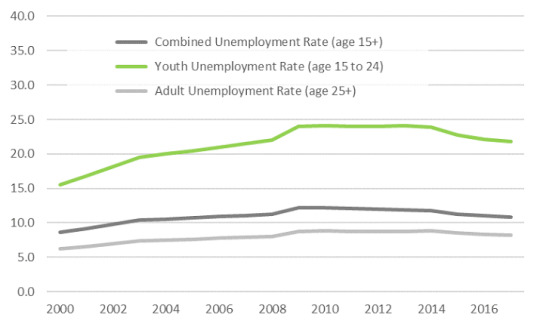
Unemployment rate in Kenya over the years.
The graphs below give a clear depiction of Kenya's state of employment over the years;
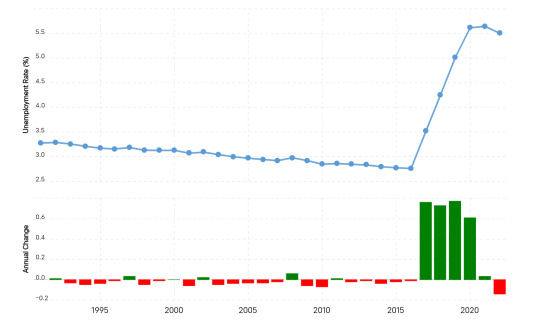
Source: <a href='https://www.macrotrends.net/countries/KEN/kenya/unemployment-rate'>Source</a>
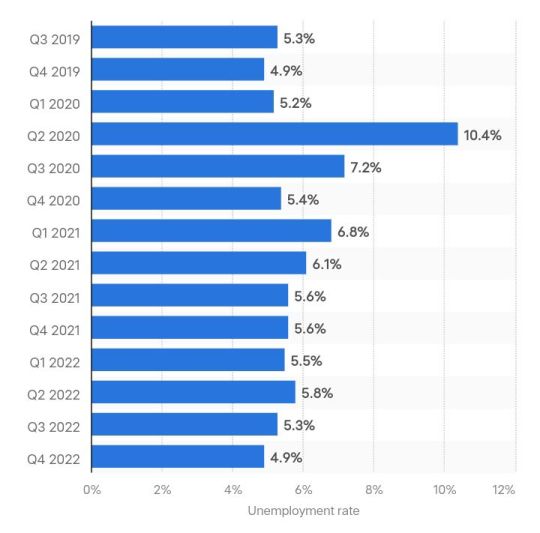
Unemployment rate in Kenya from Q3 2019 to Q4 2022. Source; https://www.statista.com/statistics/1134370/unemployment-rate-in-kenya/
2 notes
·
View notes
Text
UNDP Internship Program 2025-26 | Apply Now
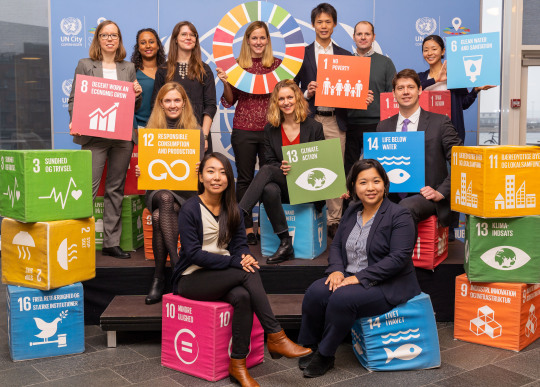
This One Internship Could Be the Career Break You Didn’t Know You Were Waiting For… What if one decision—one application—could place you at the heart of solving global challenges? What if you could work with world leaders, policymakers, and international changemakers without spending a fortune on grad school?
The UNDP Internship Program 2025-26 might be that opportunity. And the best part? It’s real, it’s open, and yes—you can apply now.
What Is the UNDP Internship Program?
The United Nations Development Programme (UNDP) is the world’s leading agency on global development, working in over 170 countries to end poverty, build climate resilience, and promote inclusive growth.
But here’s what they don’t tell you on the official page: The UNDP Internship Program is one of the most strategic launching pads for global careers—whether you’re aiming for a UN role, international NGO, or even consulting with the World Bank. This isn’t just another internship. It’s a career catapult.
Why It’s a Big Deal in 2025-26
In a world shaped by climate emergencies, economic recovery, tech inequality, and conflict, the demand for young, dynamic, and globally aware talent has never been higher. The UNDP knows this, and they're actively seeking interns who can bring fresh solutions to complex issues.
What makes 2025-26 even more exciting?
Hybrid & remote options: Interns are now placed in physical offices or virtually, allowing greater access to opportunities regardless of your location.
Wider eligibility: Students and recent graduates (within 2 years of graduation) are now encouraged to apply.
Global placements: From New York to Nairobi and Geneva to Jakarta, interns are joining real UN teams in real countries, tackling real problems.
Who Can Apply?
Here’s the surprising part: You don’t need to be a policy major or have years of experience in international development. You do need to have:
Be enrolled in a graduate school program or the final year of a bachelor’s program.
Or be a recent graduate (within the last 2 years).
Fluency in English is required. Knowledge of French, Spanish, or Arabic is a bonus.
A passion for international development, public policy, economics, climate action, digital innovation, or humanitarian work.
No prior work experience in the UN is required.
What You’ll Gain
Still not convinced it’s worth applying? Here’s what former interns walk away with:
Real UN experience working on high-impact projects (not just fetching coffee).
Access to global networking opportunities with diplomats, policymakers, and sector leaders.
A polished resume that will stand out anywhere, from embassies to Ivy League grad schools.
A foot in the door for full-time UN or NGO roles—many interns are hired back as staff or consultants.
Is It Paid?
Historically, UN internships were unpaid (yes, really). But that’s changed. As of recent updates, UNDP now offers a stipend to cover living expenses in many of its locations, especially in hardship posts or costlier cities. Remote interns may also receive support depending on the assignment. Translation: This is not a luxury-only internship anymore.
How to Apply
The application process is straightforward but competitive:
Head to the UNDP Jobs Portal
Search for open “Internship” positions (by location, focus area, or language)
Submit your CV, cover letter, and proof of enrollment or recent graduation
If shortlisted, you’ll go through a brief interview and onboarding process
Tailor your application to show your global mindset, teamwork skills, and passion for impact. They’re looking for leaders, not just learners.
Deadlines & Timeline
UNDP accepts internship applications year-round, but specific roles may close quickly. For 2025-26, some of the most popular placements fill up months in advance, so the earlier you apply, the better. Don't wait for a “perfect” moment—start now.
Final Thoughts: Why You Shouldn’t Miss This
The UNDP Internship Program 2025-26 isn’t just a résumé booster. It’s a chance to make a real impact while stepping into global leadership. Ask yourself:
Are you ready to collaborate with people from over 100 countries?
Are you passionate about creating solutions for inequality, climate change, and peacebuilding?
Are you looking for meaningful work that opens doors?
If yes, then this isn’t just an internship—it’s your launchpad to a global future. Apply now. The next opportunity could change your life—and help change the world.
0 notes
Text
Kenya Construction Equipment Market Analysis, Share, Demand, Revenue and Future Investment Opportunities 2034: SPER Market Research

Heavy machinery and trucks used in mining, infrastructure development, and building are together referred to as construction equipment. These devices are made to do a variety of jobs, including lifting, paving, excavation, material handling, and earthmoving. Excavators, bulldozers, loaders, cranes, dump trucks, graders, and concrete mixers are examples of common construction equipment. Construction equipment is primarily used to increase productivity, decrease manual work, and improve the caliber and speed of projects. Modern construction equipment frequently integrates technologies like automation, GPS, and telematics due to technological improvements, enabling more accurate and effective operations on building sites. By lowering the dangers connected with human work, this technological advancement not only increases operational efficiency but also improves safety on building sites.
According to SPER Market Research, ‘Kenya Construction Equipment Market Size- By Types, By Application- Regional Outlook, Competitive Strategies and Segment Forecast to 2034’ states that the Kenya Construction Equipment Market is estimated to reach USD XX billion by 2034 with a CAGR of 4.7%.
Drivers:
The market for construction equipment in Kenya is expanding significantly due to government programs aimed at enhancing infrastructure. Under Vision 2030, initiatives like the Lamu-Isiolo Road and the LAPSSET Corridor seek to improve connectivity while promoting economic growth. The need for housing, business spaces, and transportation infrastructure is also rising as a result of urbanization and population expansion. The market is also stimulated by the government's dedication to improving informal settlements and creating affordable housing. Large-scale projects involving foreign direct investment (FDI) also increase demand for cutting-edge construction equipment. The use of contemporary equipment is facilitated by the presence of foreign construction companies in Kenya, which speeds up market growth.
Restraints:
The expansion of the Kenyan construction equipment market is hampered by a number of issues, despite the positive outlook. Corruption is a serious problem that frequently leads to project delays and exorbitant expenses. A bottleneck in project execution results from the lack of trained workforce, which lowers construction work's productivity and quality. Inadequate roads, energy, and other facilities present further challenges since they make logistics more difficult and raise operating expenses. Project approvals and implementation might be further delayed by regulatory obstacles and bureaucratic inefficiencies, which makes it challenging for firms to run efficiently. In order for the market to expand sustainably, these problems need to be fixed.
Kenya Construction Equipment Market is dominated by Nairobi due to its role as the country's economic hub. Nairobi hosts a concentration of construction activities, including commercial buildings, infrastructure projects, and residential developments. Some of its key players are – J C Bamford Excavator Limited, Komastsu Ltd., Sany Heavy Industry Co., Ltd., Volvo Construction Equipment, XCMG East Africa.
Request a Free Sample Report: https://www.sperresearch.com/report-store/kenya-construction-equipment-market.aspx?sample=1
Kenya Construction Equipment Market Segmentation:
By Types: Based on the Types, Kenya Construction Equipment Market is segmented as; Aerial Work Platform, Bulldozer and Construction Tractor, Crane, Dump Truck, Earthmoving Equipment, Material Handling Equipment, Road Construction Equipment.
By Application: Based on the Application, Kenya Construction Equipment Market is segmented as; Construction, Mining, Municipality, Oil & Gas, Road Construction, Others.
By Region: This research also includes data for Eastern Kenya, Northern Kenya, Southern Kenya, and Western Kenya.
For More Information, refer to below link: –
Kenya Construction Equipment Market Growth
Related Reports:
Saudi Arabia Concrete Market Growth, Size, Trends Analysis - By Type, By Application, By End User Industry - Regional Outlook, Competitive Strategies and Segment Forecast to 2033
Brazil Stainless Steel Market Growth, Size, Trends Analysis- By Type, By Application- Regional Outlook, Competitive Strategies and Segment Forecast to 2033
Follow Us –
LinkedIn | Instagram | Facebook | Twitter
Contact Us:
Sara Lopes, Business Consultant — USA
SPER Market Research
+1–347–460–2899
#Kenya Construction Equipment Market#Kenya Construction Equipment Market Growth#Kenya Construction Equipment Market Size#Kenya Construction Equipment Market Trends#Kenya Construction Equipment Market Share#Kenya Construction Equipment Market Revenue#Kenya Construction Equipment Market challenges#Kenya Construction Equipment Market competition#Construction Equipment Manufacturers in Kenya#Kenya Construction Equipment Market report
0 notes
Text
The Benefits of Investing in Real Estate in Kenya’s Growing Market

Kenya's real estate market has witnessed significant growth over the past decade, emerging as one of the most attractive investment opportunities in the region. With urbanization, population growth, and infrastructure development on the rise, the demand for housing and commercial properties is steadily increasing. From an apartment for sale in Kenya to prime properties in Nairobi's upscale neighborhoods like Lavington, Kilimani, and Westlands, the market offers diverse opportunities for investors.
In this blog, we’ll explore the key benefits of investing in real estate in Kenya, focusing on why the market continues to thrive.
Why Real Estate is a Smart Investment
Investing in real estate offers unparalleled advantages. In Kenya, the sector provides investors with:
Steady Returns: Real estate investments, particularly rental properties, deliver consistent income.
Appreciation: Property values in Kenya’s urban and suburban areas, such as Syokimau and Nairobi, have shown steady growth.
Portfolio Diversification: Real estate offers a tangible asset to balance investment portfolios.
Key Benefits of Investing in Kenyan Real Estate
1. High Demand for Housing
Kenya’s population growth and urbanization have created a substantial demand for housing. The country’s urban population grows by approximately 4% annually, fueling the need for modern housing options.
Best Areas to Invest in Housing
Apartment for Sale in Nairobi: The capital city is a hotspot for buyers and renters due to its job opportunities and vibrant lifestyle.
Apartment for Sale in Syokimau: With its affordable pricing and proximity to transport hubs, Syokimau attracts middle-income families and young professionals.
Apartment for Sale in Kilimani: Kilimani combines modern living with urban convenience, appealing to professionals and expatriates.
2. Infrastructure Development
Kenya’s ongoing infrastructure projects, including the Nairobi Expressway, the Standard Gauge Railway (SGR), and road expansions, have boosted real estate values.
How Infrastructure Drives Value
Improved connectivity increases property demand in areas like Syokimau and Athi River.
Enhanced road networks make areas like Lavington and Westlands more accessible and desirable.
Investing in an apartment for sale in Kenya near these developments guarantees high appreciation potential.
3. Attractive Rental Yields
Real estate in Kenya offers competitive rental yields compared to other investment classes. Urban areas, particularly Nairobi, have high rental demand due to the influx of professionals and expatriates.
Top Locations for Rental Income
Apartment for Sale in Westlands: Westlands has a vibrant commercial and residential scene, attracting high-income tenants.
Apartment for Sale in Lavington: Families and professionals favor Lavington for its serene environment and premium amenities.
4. Diversified Property Options
Kenya’s real estate market caters to various investor needs, from affordable housing to luxury apartments.
Property Types to Consider
Affordable Housing: Popular in areas like Syokimau, targeting middle-income buyers.
Luxury Properties: Found in neighborhoods like Kilimani, Lavington, and Westlands.
Commercial Real Estate: Includes office spaces and retail outlets, particularly in Nairobi’s central business districts.
5. Government Support for Real Estate Development
Kenya’s government has introduced initiatives to boost homeownership and property investments.
Key Policies and Programs
Affordable Housing Initiative: Targets the development of over 500,000 affordable homes by 2027.
Tax Incentives: Reductions for developers focused on low-cost housing projects.
Mortgage Financing Options: Banks and financial institutions now offer flexible mortgage plans, making it easier for buyers to purchase an apartment for sale in Nairobi.
6. Long-Term Appreciation
Real estate values in Kenya have consistently risen over the years. Strategic investments in areas experiencing rapid growth, such as Kilimani and Syokimau, promise significant returns.
Areas with High Growth Potential
Apartment for Sale in Syokimau: Proximity to the SGR and Nairobi Expressway boosts property appreciation.
Apartment for Sale in Kilimani: Continued urban development makes Kilimani a prime investment choice.
7. Real Estate as a Hedge Against Inflation
Real estate is an excellent investment during periods of inflation. As property values and rental prices increase, investors enjoy better returns compared to other asset classes.
Tips for Successful Real Estate Investment in Kenya
1. Research the Market
Study market trends, property prices, and rental demand in areas like Nairobi, Westlands, and Lavington to make informed decisions.
2. Choose Prime Locations
Focus on areas with strong growth potential. An apartment for sale in Westlands or Kilimani offers high demand and long-term value.
3. Work with Professionals
Engage reputable real estate agents and developers to access verified listings and navigate the buying process.
4. Evaluate Financing Options
Secure affordable financing by comparing mortgage rates or partnering with developers offering flexible payment plans.
5. Inspect the Property
Before purchasing, ensure the property meets quality standards, and verify its legal documentation.
Frequently Asked Questions
Is real estate a profitable investment in Kenya?
Yes, Kenya’s growing population, infrastructure development, and urbanization make real estate highly lucrative.
What’s the best area for property investment in Nairobi?
Popular areas include Syokimau for affordability, Kilimani for urban appeal, and Westlands for high-end properties.
Can foreigners invest in Kenyan real estate?
Yes, foreigners can invest in leasehold properties for up to 99 years.
Conclusion
Kenya’s thriving real estate market presents a wealth of opportunities for investors. Whether you’re looking for an apartment for sale in Kenya, targeting Nairobi’s vibrant neighborhoods like Kilimani, Lavington, or Westlands, or exploring affordable options in Syokimau, there’s a property to suit your needs.
By understanding market trends, focusing on high-demand areas, and leveraging government incentives, you can secure profitable investments that yield long-term benefits. Start your real estate journey today and reap the rewards of Kenya’s growing market! RentScore makes it easy to find properties that match your budget—browse our site or reach out via 0743 466 209 / 0757 488 833 or [email protected] for support.
#real estate investing#propertyinvestment#realestate#homeownership#home & lifestyle#realtor#aesthetic#business#architecture
0 notes
Text
DDB and the Kenyan Government: A Partnership to Drive Employment Growth
In the face of rising youth unemployment and economic challenges, innovative solutions are required to create sustainable jobs and foster financial inclusion. Recognizing this need, DDB, a global leader in the task economy, has partnered with the Kenyan government to drive employment and empower individuals through flexible earning opportunities. This partnership is not just about creating jobs—it’s about building a future where every Kenyan has access to meaningful economic participation.
The Employment Challenge in Kenya
Kenya’s youthful population is one of its greatest assets, yet high unemployment rates continue to hinder economic progress. Traditional job markets struggle to accommodate the growing labor force, particularly in rural areas where opportunities are scarce. Digital platforms like DDB offer a transformative solution, providing an accessible and innovative approach to employment.
DDB’s Task Economy Model
DDB operates on a task economy model that connects users with leading global brands, such as TikTok, YouTube, and Instagram. Individuals complete simple tasks—such as app downloads, surveys, and content sharing—and earn instant income. This model addresses key employment barriers by offering:
Flexibility: Tasks can be completed anytime, anywhere, accommodating diverse schedules.
Accessibility: No advanced skills or qualifications are required, making it ideal for Kenya’s diverse workforce.
Immediate Earnings: Payments are credited instantly upon task completion, fostering trust and motivation.
By empowering users with these opportunities, DDB enables them to earn while developing valuable digital skills.
The Partnership: DDB and the Kenyan Government
The collaboration between DDB and the Kenyan government focuses on creating sustainable employment through technology and innovation. Key objectives include:
Job Creation
Through its platform, DDB has already provided thousands of Kenyans with flexible earning opportunities.
This initiative ensures that individuals, particularly in underserved areas, can access reliable income sources.
Skills Development
By completing tasks and building teams, users gain valuable digital and entrepreneurial skills, enhancing their employability in an evolving job market.
Promoting Entrepreneurship
DDB’s referral and team-building programs encourage users to grow their networks, fostering grassroots entrepreneurship and long-term financial stability.
Reducing Regional Disparities
The partnership prioritizes reaching rural communities, where traditional employment options are limited, ensuring that all Kenyans can benefit from economic opportunities.
Impact Achieved So Far
The partnership has already demonstrated significant results:
Over 100,000 Kenyans have joined the DDB platform, with many reporting stable secondary incomes.
DDB has injected millions of Kenyan shillings into the local economy through its payout system.
In rural areas, where traditional jobs are scarce, DDB has provided individuals with new pathways to financial independence.
Success Stories
Mary, Nairobi “As a single mother, finding flexible work was a challenge. DDB allowed me to earn from home while caring for my children. Now, I can support my family and have financial stability.”
John, Kisumu “Through DDB, I not only earn a steady income but have also built a team of 20 people. This has not only improved my life but has also given others the opportunity to grow financially.”
Future Plans: Scaling the Impact
DDB and the Kenyan government aim to scale this initiative to reach even more individuals across the country. Plans include:
Expanding Digital Access: Introducing training programs to improve digital literacy and task efficiency.
Increasing Task Availability: Partnering with more global and local brands to ensure a steady flow of tasks.
Empowering Communities: Strengthening community engagement through local partnerships and outreach programs.
These efforts are designed to ensure that DDB’s impact is both sustainable and far-reaching.
A Shared Vision for Economic Growth
The partnership between DDB and the Kenyan government represents a shared commitment to fostering economic growth, reducing unemployment, and creating a more inclusive society. By leveraging technology and innovation, this collaboration is shaping a future where every Kenyan has access to meaningful work and financial independence.
Join the Movement
DDB invites all Kenyans to be part of this transformative journey. Whether you’re looking for flexible earning opportunities or seeking to make a lasting impact in your community, DDB provides the tools and support to help you succeed.
0 notes
Text
Exploring Innovation: The Rise of Tech Startups and Latest Tech Updates from Africa
With fast expansion of tech companies and ongoing technological breakthroughs, Africa's tech scene is currently experiencing an unparalleled change. Keeping current with the newest tech developments Africa has become essential for anybody engaged in the worldwide technology scene as these companies become major participants in the economic growth of the continent. This dynamic change not only captures the entrepreneurial energy present on the continent but also emphasizes the major influence of digital innovation on conventional sectors.
Significance of Tech Startups in Africa
African tech startups are possible game-changers in the worldwide technology scene, not only fresh companies. From mobile money and financial services to agricultural tech and beyond, these businesses are innovating solutions that meet special local issues and opportunities. Their expansion marks a new period of technological mastery and economic independence for the continent as it stimulates innovation, job creation, and foreign investment, hence fueling employment.
Driving Forces Behind Africa's Tech Boom
Many elements support the active tech startup scene in Africa. While educational programs and investments in tech clusters around cities like Nairobi, Lagos, and Cape Town cultivate young talent and stimulate innovation, increased access to the internet and mobile technologies broadens the possibilities for digital business. Furthermore, African digital entrepreneurs are skilled in customizing solutions that especially meet the demands of the local market, therefore demonstrating the importance of home-grown businesses in the tech sector.
Keeping Up with Tech Updates in Africa
Staying updated with tech updates Africa is essential for technology enthusiasts, investors, and entrepreneurs worldwide. These updates highlight developments that might affect world markets, expose the development path of newly founded companies, and offer views on the newest trends. Moreover, knowing these updates helps interested parties evaluate the continent's technological preparedness and investment environment, therefore supporting strategic decisions.
Impact of Tech Startups on African Societies
Beyond the business world, digital firms are quite important for social growth as well. These companies solve basic societal concerns including healthcare, education, and access to clean water by bringing creative technology solutions, therefore enhancing the quality of life for many Africans. Their influence emphasizes how technology can change lives, so watching tech developments Africa benefits not only corporate and technological experts but also legislators and non-governmental organizations.
Conclusion
Following the path of tech startups and being informed about tech updates Africa is absolutely essential for anybody wishing to understand the dynamic world of African technology or to have a pulse on the newest innovations. Providing thorough coverage and perceptive analysis of Africa's tech industry, platforms like techbuild.africa are invaluable tools. Whether your interests are tech, you are a seasoned investor, or you are a fledgling entrepreneur—tech builds. Africa ensures you never miss a beat in the tech development story of the continent by connecting you with the core of its innovation revolution.
0 notes
Text
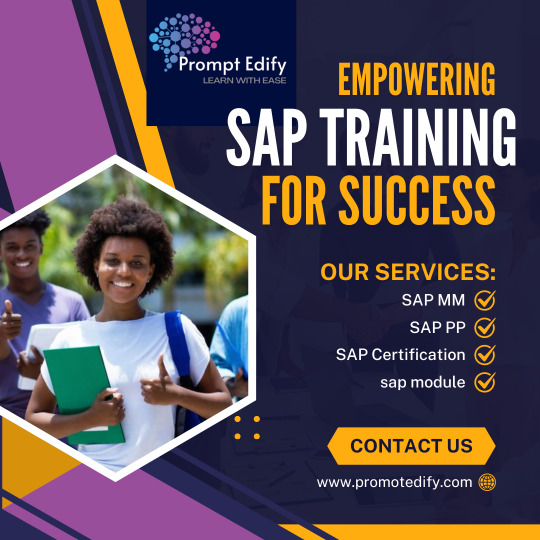
SAP Software Training and Certification in Nairobi is designed to equip professionals with the necessary skills and knowledge to effectively utilize SAP solutions in various business environments. With the growing demand for SAP expertise in the region, this training program is tailored to meet the needs of individuals and organizations aiming to enhance their operational efficiency and competitiveness.
Key Features of SAP Software Training & Certification:
Comprehensive Course Offerings:
Courses cover a wide range of SAP modules, including SAP S/4HANA, SAP FICO, SAP MM, SAP SD, and more, catering to different business functions.
Experienced Instructors:
Training is delivered by certified instructors with extensive industry experience, ensuring that participants gain practical insights and real-world applications.
Hands-On Learning:
The training includes practical exercises and case studies, allowing participants to work on real SAP systems and gain hands-on experience.
Flexible Learning Options:
Training is available in various formats, including in-person classes, virtual instructor-led sessions, and online self-paced courses, accommodating different learning preferences.
Certification Preparation:
The program prepares participants for SAP certification exams, enhancing their credibility and career prospects in the job market.
Industry-Relevant Skills:
Focus on developing skills that are directly applicable to the workplace, enabling participants to make immediate contributions to their organizations.
Networking Opportunities:
Participants have the chance to connect with industry peers, instructors, and SAP professionals, fostering a valuable network for career advancement.
Customized Corporate Training:
Tailored training solutions are available for organizations looking to upskill their teams, ensuring alignment with specific business objectives and processes.
Benefits of SAP Software Training & Certification:
Career Advancement: Completing SAP training and certification can significantly enhance job prospects and career advancement opportunities in the competitive job market.
Increased Efficiency: Knowledge of SAP software leads to better decision-making and streamlined business processes, improving overall organizational efficiency.
Higher Earning Potential: Certified SAP professionals often command higher salaries due to their specialized skills and knowledge.
Staying Relevant: Continuous learning through SAP training helps professionals stay updated with the latest developments in SAP technology and best practices.
Conclusion
SAP Software Training and Certification in Nairobi is a vital investment for both individuals and organizations aiming to leverage SAP solutions for improved business performance. With its comprehensive curriculum, experienced instructors, and focus on practical skills, this training program equips participants with the tools needed to thrive in today’s dynamic business environment. Whether you're a seasoned professional or just starting your career, SAP training can pave the way for greater success and opportunities in the field of enterprise resource planning.
📱 (+91) 99932 86938 📧 [email protected] 🌐 www.promptedify.com 🔗 You can chat with us on WhatsApp 📑 Book you spot now👉 Register Now
#sap modules#sap consulting services#sapconsultant#sap certification#sap course#sap fico course#sap online training#sap s/4 hana finance course#career in sap#sap_certification
0 notes
Text

Nzambi Matee (September 19, 1992) is a Kenyan-trained mechanical engineer, environmentalist, hardware designer, inventor and serial entrepreneur. She is well known for her innovative and creative ways of converting waste into sustainable materials. She pioneered sustainable efforts by recycling plastic to make bricks that can be even stronger than concrete. Her sustainable efforts have also been hailed as one of the successful strategies to curb plastic pollution in Kenya. She founded Gjenge Makers, which is based in Nairobi.
She pursued her interest in physics and material engineering. She worked as an engineer in the oil industry of Kenya.
She decided to quit her job as a data analyst to focus on sustainability and waste management. She made arrangements to set up a small laboratory in her mother’s backyard. She began creating and testing pavers, and she waited for about a year to develop the right ratios for her paving bricks. She developed the first brick from plastic waste and she made her self-made machine to convert plastic waste to bricks on a large scale.
She won a scholarship to attend a social entrepreneurship training program in the US. She used the material labs at the University of Colorado Boulder to test and refine the ratios of sand to plastic.
She founded the startup company Gjenge Makers to recycle plastic waste into bricks. She used her experience of design thinking when establishing the Gjenge Makers Foundation. She was inspired to set up Gjenge Makers after witnessing the plastic bags being scattered along the streets of Nairobi. She designed her machines at the Gjenge Makers factory and her factory has recycled around 20 tonnes of waste plastics as of 2021.
She was recognized by the UN Environment Programme with the prestigious honor of Young Champion of the Earth 2020 Africa winner. #africanhistory365 #africanexcellence
1 note
·
View note
Text
Kenya’s Infrastructure Surge: A Catalyst for Growth
Kenya has embarked on an ambitious infrastructure development program that aims to transform the country into a regional economic powerhouse. This ambitious initiative has seen significant investments in various sectors, including transportation, energy, and telecommunications.
Key Infrastructure Projects:
Transportation: Standard Gauge Railway (SGR): The SGR, a modern railway line connecting Mombasa to Nairobi and eventually to the border with Uganda, has revolutionized transportation in Kenya. It has reduced travel times, improved efficiency, and boosted trade.
Roads: The government has focused on upgrading and expanding the road network, improving connectivity between cities and rural areas. This has facilitated the movement of goods and people, stimulating economic activity.
Airports: Kenya has invested in modernizing and expanding its airports, particularly the Jomo Kenyatta International Airport in Nairobi. This has enhanced the country’s attractiveness as a regional aviation hub. Energy:
Renewable Energy: Kenya has made significant strides in harnessing renewable energy sources, such as geothermal, solar, and wind power. This has helped reduce dependence on fossil fuels and improve energy security.
Power Grid: The government has been expanding and upgrading the power grid to ensure reliable and affordable electricity supply to both urban and rural areas.
Telecommunications: Broadband: Kenya has witnessed a rapid expansion of broadband internet connectivity, improving access to information and communication technologies. This has facilitated e-commerce, education, and remote work.
Mobile Money: Mobile money services have become ubiquitous in Kenya, providing financial services to millions of people, particularly those in rural areas.

Impact on the Economy:
Infrastructure development has had a profound impact on Kenya’s economy. It has:
Increased Trade: Improved transportation infrastructure has facilitated trade and reduced the cost of doing business.
Created Jobs: Infrastructure projects have generated employment opportunities, contributing to economic growth and poverty reduction.
Attracted Investment: The development of modern infrastructure has made Kenya more attractive to foreign investors, leading to increased capital inflows.
Improved Quality of Life: Better infrastructure has enhanced the quality of life for Kenyans by improving access to essential services such as healthcare, education, and transportation.
Kenya’s infrastructure development program is a testament to the country’s commitment to progress and economic transformation. As these projects continue to materialize, Kenya is well-positioned to become a regional leader and a key player in the global economy.
0 notes
Text
Global Digital Health Program Manager (Remote)
Global Digital Health Program Manager (Remote) Preferable Location(s): Kigali, Rwanda | Nairobi, Kenya | Kampala, Uganda | Kinshasa, Congo (Democratic Republic of the) | Accra, Ghana | Cape Town, South Africa | Lagos, Nigeria | Johannesburg, South Africa | Toronto, Canada | Montreal, Canada About Madiro Madiro is dedicated to a future where a healthy and productive life is accessible to all. Our mission is to eliminate poor health as a barrier to people building better lives for themselves, their families, and their communities. We are unwavering in our commitment to health equity for all populations – whether the challenges arise from weak health systems, rural or remote living, conflict, or disasters. To achieve this, we identify transformative innovations in global health and support them to scale. We collaborate with pioneering organizations across Africa whose solutions have proven impact, helping them reach wide-scale adoption and benefit the maximum number of people. Job Description Madiro is seeking a highly skilled and hands-on Global Digital Health Program Manager. The successful candidate will collaborate with portfolio companies, humanitarian partners, international development organizations, funders, and ministries of health across African nations to implement and scale effective health innovations supported by Madiro. Responsibilities - Strategic Guidance: Provide visionary direction to Madiro portfolio companies and partner organizations in scaling digital health solutions, with a particular focus on Digital Public Goods. - Program Management: Lead the development, deployment, and optimization of digital health products, ensuring they meet the diverse needs of users and remote communities. - Collaboration and Advocacy: Forge and maintain strong relationships with international development organizations, agencies, funders, ministries of health, and other key stakeholders to drive the adoption and integration of digital health innovations. - Capacity Building: Provide in-depth technical assistance and empower partner organizations by enhancing their capacity to effectively manage and scale innovation. - Monitoring and Evaluation: Establish and implement rigorous monitoring and evaluation frameworks to measure the impact of products and drive continuous improvement. - Innovation and Scaling: Identify and champion innovative digital health solutions with proven impact, facilitating their wide-scale adoption to maximize reach and benefits. Qualifications At least 8 years of experience in digital health, public health, or global health roles, with a successful track record in providing strategic guidance and technical assistance in low-resource settings. Advanced degree in Public Health, Health Informatics, Global Health, or a related field. Extensive knowledge of digital health technologies, data management and interoperability. Demonstrated leadership and advisory skills, with the ability to guide policy at high levels. Exceptional interpersonal and communication skills, with experience working in multicultural and multidisciplinary environments. A profound commitment to health equity and improving health outcomes for all. Conditions 1 year contract duration, renewable Flexible location, with a preference for candidates based in African countries Remote work, unless the candidate is already present in Kigali, Toronto or Montreal where offices can be made available This role will report to Madiro's Director of Programs and Digital Health Application Process Application Deadline: July 15th, 2024 As an equal-opportunity employer, Madiro celebrates diversity and is committed to creating an inclusive environment for all employees. Join us in transforming global health and ensuring health for all. Apply Now Read the full article
0 notes
Text
UK High Commissioner Enhances African Engagement
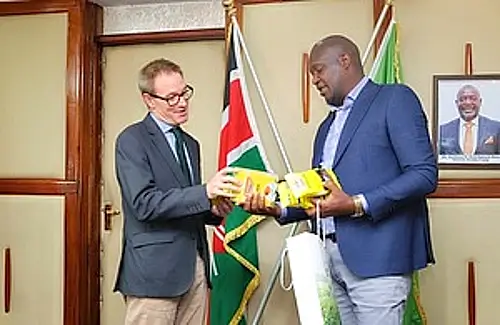
Cementing UK's Strong Partnership with Rift Valley
In an effort to fortify the robust ties between the United Kingdom and Kenya's Rift Valley Region, Neil Wigan, the High Commissioner to Kenya, embarked on his maiden journey to the counties of Bomet, Kericho, Kisumu, Uasin Gishu, and Nandi on October 3 and 4, 2023. This visit aims to build upon the enduring cultural, economic, and security bonds that have connected the UK and the Rift Valley while seeking avenues for mutual prosperity. Nurturing County Partnerships During his visit, High Commissioner Wigan engaged in discussions with prominent figures in the region, including Prof. Hillary Barchok and Dr. Erick Mutai, the Governors of Bomet and Kericho, respectively. These conversations illuminated the challenges faced by these communities, including issues surrounding sexual and gender-based violence. Moreover, they explored opportunities to deepen the partnership, particularly in trade and investment. Fuelling Economic Growth in Elgeyo Marakwet High Commissioner Wigan also conferred with H.E Wisley Rotich, the Governor of Elgeyo Marakwet, regarding the UK's Sustainable Urban Economic Development (SUED) program. This substantial five-year initiative, worth nearly 13 billion KES (£70 million), is actively identifying critical investment prospects across 12 Kenyan counties, with the aim of bolstering economic growth and job creation. Fostering Cultural Ties in Nandi County In Nandi County, the High Commissioner held discussions with H.E. Stephen Sang, the Nandi County Governor and chair of the North Rift Economic Block (NOREB). The UK's support for NOREB is catalyzing economic expansion in the region. Their deliberations encompassed strategies to deepen cultural connections between British and Kenyan communities, and High Commissioner Wigan also got an insight into the rapid digitalization of service provision in the area. Embracing Historical Dialogue During his regional tour, the High Commissioner met with representatives of the Borowo, Kipsigis, Koitalel, and Talai clans, as well as the Nandi Council of Elders. These interactions allowed him to hear firsthand accounts of the experiences of these communities during the era of British colonial rule, reaffirming his commitment to fostering open and sincere dialogues.
A Pledge for the Future
Concluding his visit, High Commissioner Neil Wigan expressed his observations, stating, "From my visit to the Rift Valley, it is clear that the UK-Kenya partnership stretches far beyond the capital city. UK programming, engagement, and private sector investment in Bomet, Kericho, Nandi, and the region are improving lives and livelihoods in partnership with county governors. With further planned programs and investments on the horizon, I'm already looking forward to my next visit to Rift Valley and to exploring other parts of this great country." In his visit to the Rift Valley Region, High Commissioner Neil Wigan underscores the deepening relationship between the UK and Kenya's heartland, with a focus on mutual prosperity and cultural exchange. Sources: THX News & British High Commission Nairobi. Read the full article
#Africanaudienceengagement#CulturaltiesinNandiCounty#EconomicgrowthinKenya#HistoricaldialogueinRiftValley#MutualprosperityinAfrica#NeilWiganvisit#RiftValleyRegion#SustainableUrbanEconomicDevelopment#UKHighCommissioner#UK-Kenyapartnership
0 notes
Text
Animation Night 125: Peter Chung
[Animation Night archive]
Hiii everyone, it’s Thursday! And it’s a multiple of 5, which means it’s time for something ‘big’. Which is to say... full circle back to the creator whose Aeon Flux started this whole thing, Peter Chung~... one of my favourite directors.

^ me setting up an Animation Night...
But! We’re not here to watch Aeon Flux again this time! [Though if you wanna read about Aeon Flux, go check out Animation Night 52]. We’re here to watch the other works of Peter Chung! Such as Alexander Senki aka Reign: the Conqueror...

You see, Peter Chung is one of the few people to have the experience of directing both anime and western animation. The insights this gave him, related once upon a time on the anipages forums, were one of the seeds of what would become the ‘sakuga fandom’.
But let’s start at the beginning. Here’s a picture of Chung via imdb...
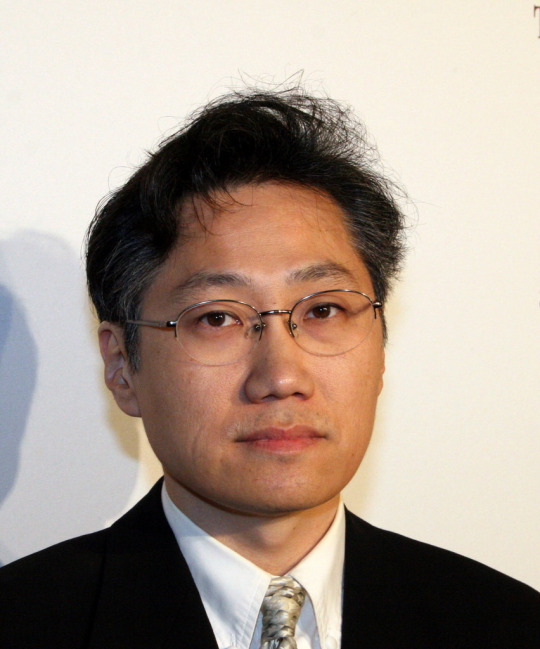
He was born in Seoul in 1961, the son of a guy in the foreign service, which meant his childhood was spent travelling all over the world (Wikipedia lists Seoul, London, Nairobi, Washington, D.C., New York and Tunis). Eventually they settled down to migrate to the USA, in Virginia. I’m not exactly sure when Chung got the animation bug, but it was early enough to send him to CalArts, where he attended their experimental animation program.
At age 18, he graduated CalArts joined the animation industry, working for the Spanish painter Salvador Bru. You can see some of Bru’s abstract paintings here; I haven’t been able to track down any of his work in animation. In any case, within a year Chung landed at Hanna-Barbera, working on character design, and also working with Ralph Bakshi [Animation Night 63] on layouts for his barbarian movie Fire and Ice (1983).
At this point he apparently got scouted by Didney for feature development, although which features he may have developed is not entirely clear. He also has layout and art direction credits for a couple of franchise works from this mid-80s period, such as The Transformers (1984, animation outsourced to Toei) and Teenage Mutant Ninja Turtles (1987, animated at an American studio then called Murakami-Wolf-Swenson, now Fred Wolf Films), and some less well remembered ones such as C.O.P.S., a bizarre animated spinoff of a reality show following cops on the job, and Ring Raiders, a toyline-driven show promoting toy aeroplanes.

Chung’s major break came, so far as I can tell, when he designed the characters for the inaugral Nickoledeon show Rugrats (see Animation Night 31 when we watched the Hanukkah episode), in which a group of children play in elaborate fantasy worlds. The show was a huge hit, although it was still a few years until Chung got the opportunity to create something purely according to his vision in Aeon Flux. In the intervening period he got to work on the post-apocalyptic superhero show Phantom 2040 (1994), once again on character design.
Then came Liquid Television, and Aeon Flux. Aeon Flux stood out amidst Liquid Television because its animation could easily have belonged a mainstream show... if it wasn’t horny philosophical science fiction, heavy on ambiguity. But by the same token, it’s specificity won a lot of die-hard fans (like me).
Since there are a number of interviews out there, let’s get some of Chung’s own words on what went into it...
O: You tend to broadly exaggerate your characters' physical characteristics, especially their height and their musculature—is there any particular symbolic or aesthetic reason?
PC: That's a hard thing for an artist to try to analyze. I could kind of try to pick it apart, but the simple truth is, that's the way I draw. I mean, I can tell you about my influences—my favorite artist is Egon Schiele, the German Expressionist. If you look at his drawings, they're very economical, very expressive. The first time I saw them, I thought they were perfect for animation. So I did make a conscious effort to try and adapt that approach to drawing. The other thing is… I was going for a style, when I was doing Aeon Flux, that was much more dependent on expressive drawing as opposed to lots of surface detail. In Japanese productions, they like to put a lot of highlights and shadows on things, to make things look very rendered. Each drawing has to stand out individually as an illustration. Having been trained in American animation, I wanted to have characters that were very realistic, but not so loaded with detail that they were going to be hard to move.
O: Your characters, both in Aeon Flux and in Reign, tend to dress in a way that's half formalized costume, half fetish gear. They often don't wear much, and what they wear is elaborate and stylized. What are your fashion influences?
PC: Well, I struggled a lot, when I was doing Aeon Flux, with how far to push the costumes, and how realistic to make them. I think a lot of illustrators realize—and you see this a lot in American comics as well—that if you draw costumes realistically, it's very difficult. You end up spending all your time trying to create believable drapery. So the tendency is to draw skin-tight costumes that mold around the body. This allows you to use the body more. You see this with classical sculpture, and dancers. You try to use the expressive qualities of the human body more—that's why sculptors prefer to work with nudes, as opposed to trying to make the clothing look accurate. Otherwise you end up concentrating on the clothing and not the person. The same is true with animation—I think of my animated characters as dancers. I want to be able to use body language as much as possible.
Chung’s comments here are interesting, in that his talk of forgoing highlights reminds me of the kagenashi approach taken by Mamoru Hosoda - in both cases, putting less complexity in the static drawings to allow for more motion, but still strongly influenced by the more solid drawing style of anime instead of the more 2D graphical approach of most American TV animation. Chung’s style of lanky anatomy with exaggerated bumps and details is uinstantly recognisable; only Robert Valley, directly inspired by him, is all that similar within animation.
What about Egon Schiele? Let me show you some of his paintings...

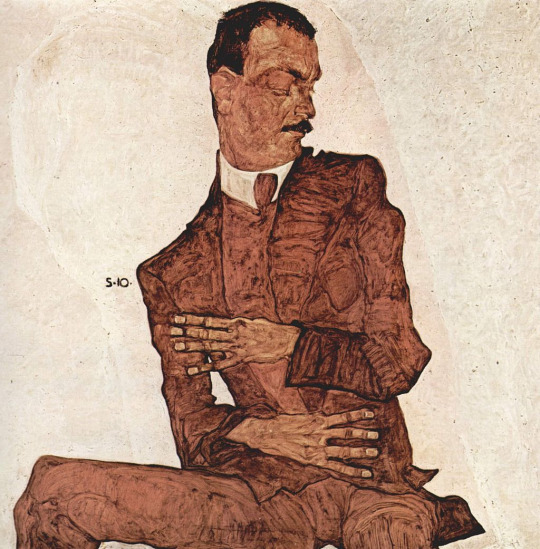
...you can probably see how he influenced Chung! (Expressionism if you’re wondering was a pre-first world war Modernist art movement which responded to naturalism and positivism by emphasising the personal, subjective emotional experience of the world. Thanks, Wikipedia!)
Alongside Schiele the German expressionist, Chung cites a whole lot of influences; lemme pick out some of the ones we’ve talked about on here...
I don't consciously model my style or techniques on any particular body of work. I try as much as possible to draw from personal experience and observation. I'm inspired by the work of other artists, mostly because they show me how good it's possible to be at practicing one's craft. They would include, in no special order:
David Lynch, Stanley Kubrick, Orson Welles, Alfred Hitchcock, Federico Fellini, Alexandro Jodorowsky [Toku Tuesday 27], Michelangelo Antonioni, Alain Resnais, Jean Cocteau, Allain Robbe-Grillet, Seijun Suzuki,
Osamu Dezaki [Animation Night 95], Yoshiaki Kawajiri [Animation Night 25, Animation Night 67], Yoshinori Kanada [Animation Night 62], Moebius [Animation Night 71], Kazuo Umezu [author of The Drifting Classroom, whose adaptation we watched on Toku Tuesday 19],
Egon Schiele, Horst Janssen, Frank Lloyd Wright, among others.
On comics, he’s pretty down on the state of the American industry, describing it as largely divided between heavy-handed narration where the illustrations feel gratuitous, and artistic flexes with weak story. He describes his aspiration to communicate the feelings of the characters visually, without being heavy-handed. So while I’m citing influences, lemme pull up Peter Chung’s favourite comics...
Here is a list of my personal favorite comics stories in no particular order. My choices are based as much on mastery of narrative form, as on originality of conception. Each of them appear to have been impelled by an inner vision; they are not comics inspired by other comics, but rather by dreams, obsessions, yearnings.
1. Baptism, Makoto-chan, Fourteen by Kazuo Umezu 2. Savannah by Sanpei Shirato 3. Mighty Atom, No-man, Phoenix by Osamu Tezuka 4. The New Gods by Jack Kirby 5. The Airtight Garage, Arzach by Moebius 6. The Incal Saga by Moebius and Jodorowsky 7. The Tower, The Hollow Earth Series by Schuiten and Peeters 8. The Jealous God, Envie de Chien by Cadelo 9. Be Free! by Tatsuya Egawa 10. Hard-Boiled by Geof Darrow and Frank Miller
I love Aeon Flux, but I’ve talked at length about it in the past, so let’s not spend too long on it here, since tonight the focus is on what came next!

In 1998-9, four years after Aeon Flux, Chung got his chance to work in anime - and not only work in anime but on a series co-directed by Rintaro (Animation Night 53, AN 62, AN 67).
So. Alexander Senki began life as a series of light novels by Hiroshi Aramata, a prolific and widely talented natural history researcher and novellist known otherwise for the occultist historical fantasy novel Teito Monogatari. Alexander Senki tell the story of Alexander the Great, but projected into a futuristic scifi setting.
For the animated version, Madhouse went for an international approach, and invited Chung to come in and design the characters and settings for a 13-episode TV anime, later compiled into a 90-minute film. Much of the animation was outsourced to the Korean studio DR Movie - one you’ll see frequently in the credits of recent anime, but I believe this was more novel at the time.
Chung commented on the experience in the above interview...
Peter Chung: There are many ways I could answer [what it’s like to put a particular stamp on a work he’s not directing], I suppose. In this particular case, it was different from a lot of other shows I've worked on as a designer. I've done a lot of work in the U.S. as a character designer, but in Japan, it's much more of an auteur role, where they really want your individual style on a project. In the U.S., it's much more collaborative. What was good about Reign was that they really liked the idea of things having an eccentric, personal style. And for me, that was great. A lot of that has to do, usually, in animation, with the ability of the animators to adapt to the drawing style of the designer, and they did a very good job, they tried very hard, to follow my original drawings. Whereas often, in American productions, they will try to simplify or adapt a designer's drawings to what the animators can draw.
O: Do you prefer the auteur method over working collaboratively?
PC: Well, as a designer, I like having the freedom and the license to design the way I want. So for me, working with the Japanese is better, at least from a designer's point of view. Now, working from the point of view of an animator, I think the animators had a lot of difficulty adapting to my style.

Animation-wise, Alexander Senki draws on the familiar techniques of Madhouse’s OVAs: limited animation and multiplane effects with moments of more complex animation. But Chung’s character and environment designs give it a particular flavour that makes it feel very different to most Madhouse works, really underlining the significance of a character designer to a project. The result, which takes a wander through the story of Alexander with a lot of philosophical musing was... polarising, but if you like Chung’s style, very appealing.
Since I cannot find the movie and it’s said to cut too much anyway, tonight my plan is to show 3-4 episodes of Alexander Senki - enough to give a taste. Because then the question is, what did Chung do next? He got a little more anime work, animating the credits to Party 7 - a live action comedy film which also Takeshi Koike on the map for its title sequence. Years later, Koike would make a spectacular tribute to Aeon Flux as an ad for the cancelled computer game...
youtube
And then we get the third entry in the ‘Aeon Fluxlike’ canon: Chung directed a segment of the Animatrix (Animation Night 6, long overdue for a rewrite though!). This was his first time working with significant CG - something he found a much more fluid process than traditional animation - and he was brimming with ideas, many of which ended up cut. Nevertheless, his entry is effective - pretty much just ‘what if Aeon Flux but the Matrix’, featuring a machine in a virtual environment designed to persuade it to defect. Chung says...
I mean, how many variations can you do on the story of someone suspecting that he's living in a simulation, then waking up? I decided to take a radically different approach and view the world from the point of view of the machines. After all, a robot would be more susceptible to delusion than a human. Also, I wanted to show that the human mind is just as capable of creating a rich and seductive dream world as a computer is.

And after these three splendid creations, what did Chung do next? I think most people if asked would draw a blank, since he kind of fell off the radar. Aeon Flux was adapted into a feature-length movie, originally described as more of an art film by director Karyn Kusama, but it was taken out of her hands and heavily re-edited by the studio into a very generic sci-fi action movie. Chung had little involvement, and was heartbroken at the result:
With apologies to both Phil and Matt-- who have publicly been effusive in their praise for the show-- the movie is a travesty. I was unhappy when I read the script four years ago; seeing it projected larger than life in a crowded theatre made me feel helpless, humiliated and sad. (...) I know that the studio made a lot of cuts against the wishes of the writers and director. Most of the cuts concerned further development of the secondary characters. Since my main problems are with the portrayal of Aeon and Trevor, I doubt that I'd have liked the longer version much better. I didn't when I read the script, and there are definitely some things I'm glad WERE cut-- like Catherine's pregnancy. Maybe the makers didn't understand the source material and thought they were being true to it; or they understood it, but didn't think it would appeal to a wide enough audience and altered it to suit their presumed target. They claim to love the original version; yet they do not extend that faith to their audience. No, they will soften it for the public, which isn't hip enough to appreciate the raw, pure, unadulterated source like they do. (...) Presuming to know what an audience wants to see and tailoring the product to fit is a method that sucks all the drive I'd have to ever create anything. It's self-defeating disingenuous. I'm not naive about the realities of making unconventional films in the arena of "mass entertainment". It's possible to make good unconventional films; it's also very hard. In any case, if you're going to risk failure, I say do it boldly, with conviction. The problem with the movie is its failure of nerve.
But Chung never seems to have gotten the chance to direct a wholly original project again. The remainder of his work is adaptations or franchise work, with various big productions reaching out to him to put a stylish auteur’s spin on their IP.
The first of these is a short film bridging the gaps between the two Riddick movies.
Riddick? Riddick is a series of sci-fi action movies featuring Vin Diesel as a space criminal. I admit, I haven’t seen them! They weren’t especially successful at the time, but became cult films, kind of present in nerd culture back in the 2000s... and kind of forgotten since. The first movie, Pitch Black, sees Riddick and co on a pilgrim ship which crash lands on an alien planet, where they have to survive. The second, The Chronicles of Riddick, opens with Riddick in hiding from bounty hunters. However did he get there? Telling us is Chung’s job!

The Chronicles of Riddick: Dark Fury is a 35 minute short animated film, created at Universal Animation Studios, which specialise in direct-to-video films. This was the first time that Chung worked with Robert Valley, who would later become well known for his two films in Love Death and Robots (Animation Night 99); fortunately this being a franchise entry does not overwrite that distinctive Chung/Valley style, as seen in this distinctive fight scene animated along with Jorden Oliwa and Lee Hong. It’s full of cool distorted perspectives in the drawings and distinctive layouts.
Chung next appeared three years later, on another franchise spinoff, titled Revisioned: Tomb Raider, a compilation series bringing on a variety of comics artists and writers to put their own spin on the game. This was supposed to be the first in a whole series of Revisioned projects based on games, but in the end it seems only one was ever made. Chung provided designs and scripts for the first three episodes. They’re all available on Youtube, starting here...
youtube
Videogame spinoff animations have a curious quality: they tend to have exceptionally lavish animation with all the videogame $$$ coming in, but often feel quite limited by being a promotion - more on that when I talk about Trigger’s Cyberpunk anime sometime soon. I’ll be interested to see how Chung handles this one.
Another three year gap later in 2010 and Chung directs his only feature-length film, Firebreather, adapting an Image comic about teenagers battling kaiju in CG. It sounds honestly... pretty plain by Chung’s standards, without much to distinguish it in either animation or the energy of the story. It seems to have disappeared without really making a splash.
In 2012 comes another brief videogame promotion, this time for Diablo.
youtube
In both this and Tomb Raider, Chung seems to have moved away from his earlier unshaded style; this one especially skews much more to ‘Western animation taking after anime’. There is, sadly, very little of that Peter Chung flair to be seen, and honestly I wouldn’t have guessed he was involved: it’s just a string of fight scenes.
The next year, Chung started working as a teacher at USC School of Cinematic Arts, where he remained ever since. It’s not quite the end of his creative output in animation, since he did produce the titles for Victor and Valentino (2019), most likely because the author of the original comic book sees him as a huge influence and asked directly. And that’s it, basically! A complete slice through the creations of the Aeon Flux guy...
What’s the plan tonight? Essentially the cross-section of Peter Chung works presented above: we’ll watch a fair chunk of Alexander Senki, and then have a look at everything since. If people are in the mood we might even rewatch a bit of Aeon Flux!
So! Let’s go! Animation Night 125 will be starting shortly, at https://twitch.tv/canmom - hope to see ya there ^^
51 notes
·
View notes
Text
Goodbye, Africa
Well loyal Tumblr followers, in the blink of an eye, our trip to Africa is coming to a close.
We’ve finished up our last full day in the beautiful Maasai Mara with a full day of driving, our final journal entries, delicious meals and our last nights sleep in Kenya. Today we said some emotional goodbyes to our Safari Drivers and the staff of Encounter Mara and some as we head back to Nairobi to clean up, repack, and shower before our flights. As the trip comes to the end however, I’d like to reflect on the trip as a whole - what we’ve learned, our take aways and some of our favorite memories.
On this trip:
We stepped out of our comfort zone right away. We flew miles from home to stay in a completely new continent to all of us for weeks. We practiced our Swahili and challenged our skills in the local market, though we were no match for the locals. We tried new foods and explored various areas of each country.
We put our nursing skills to work, looking through the lens of the sisters in the hospital and clinics we visited. Through the happy moments and the more difficult moments we experienced, we learned how important patient advocacy really is and how a relationship can develop, even with a language barrier, through the use of therapeutic touch. We assisted incredibly strong mamas through the pain of labor & delivery, saw the first moments of many babies lives, and were even lucky enough to assist in countless deliveries.
We developed relationships with sisters and Nursing Students in all of the clinics. There was an indescribable comfortability in being surrounded by the Tanzanian Nursing students in the same position as us. Being able to lean on each other, learn from each other, and share experiences together made every day better in the clinics. They inspired us to learn more and do more each and every day.
We rose to new heights climbing Mount Kilimanjaro, the tallest mountain in Africa. We climbed through hours of a downpour, slipped through mud, and used our surge of adrenaline to push us the final stretch to the top of our climb. The feelings of reaching that campsite are indescribable as are the sites experienced seeing the peaks and all the nature around us.
We educated women and children on various topics including menstrual hygiene, sex education, oral hygiene, the creation of reusable feminine pads, and more. We often take for granted our ability to have these topics covered in our public and private schools and to have the knowledge shared with us at such a young age. The power of education is such a strong force, it can decrease the rates of poverty, create more jobs, decrease maternal mortalities and so much more.
We visited many shops (and the ATM many times) supporting the beading of many women around the areas. The only problem is now figuring out where to put it all.
We saw the power of Mother Nature at her strongest points with the heaviest rains seen in the month of January in Kenya, but we did not let her stop us in our efforts to educate and explore. We practiced patience by figuring out a new plan for the days impacted by the heavy rains, but we filled our time with adventures such as visiting a nearby clinic, came face to face with a pair of white rhinos, had multiple dance parties with the staff at Enatoiti, and walked to the river.
We explored the vast lands of the Masai Mara with our phenomenal drivers Sammy, Sem, Nixon, and Wilson. We learned the plight that many of these animals face in their daily lives, followed the patterns of many families, searched high and low for other animals, and watched the sun rise and set. The amount of knowledge Sammy, Sem, Nixon, and Wilson have about these breathtaking creatures is mindblowing. There is no peace like the sounds of the animals in this area and no smell like the breath of fresh air in the conservancy.
It’s safe to say that this trip has been an eye opener for everyone. I cannot speak to everyone’s individual stories on this trip, but I can say that the memories are endless and the lessons learned will last a lifetime.
Speaking for myself I know without a doubt in my mind that this will not be the last time I see the countries of Tanzania and Kenya as there is never enough time in a trip and always much more to explore. But for now, we head back home, before school begins again on Monday, with some heavy hearts for what we leave behind in Africa but excited to see our families.
Of course this trip would not have been possible without countless people and I would like to take a minute to thank those involved:
Thank you to our families and friends for supporting us through the adventure of a life time.
Thank you to every student on this trip for bringing their own individual personality and spirit that made this trip what it was.
Thank you Lisa for taking us all under your wing and showing us the beauty of maternal health care and the impact we can have in various countries with the power of education and therapeutic touch. Thank you for showing us how we can come together as a group and the importance of letting sh** go and embracing the cultures around us. Also for YO-YO.
Thank you Katie and Cat for helping us through our various experiences inside and outside of the clinic. Thank you for talking us through various anxieties. Thank you for the dance parties on the bus and showing us the importance of “The One”.
Thank you Jimmy for being the father-like figure on our program. Thank you for always making sure everyone was content and had everything that they needed. Thank you for caring with every bone in your body about each one of us and taking the time to really get to know us (and our names :) ).
Thank you Josian for sharing our experiences with us, up Mount Kili and down. Thank you for all of the laughs and for being like an older sister to so many. There is no doubt that you will be an amazing Guide for so many trips to come.
Thank you Lincoln for taking us under your wing during our time in Kenya. Thank you for always coming up with various activities for us to do and ways for us to use our times with the worst rains Kenya has seen in the month of January.
Thank you to all of the sisters and nursing students who helped us step by step through the ongoings in the hospitals and the clinics. We appreciate more than words can say being taken under your wing and learning from you.
Thank you Sammy, Sem, Nixon and Wilson for teaching us about the wildlife in the Mara. Thank you for taking the time to share your stories with us about the countless safari trips, your personal lives, and so much more. Thank you for always being willing to leave earlier, stay later, and find whatever animal may come to mind. And thank you for the rescue through the river!
Thank you Amani, Peter, Shiobani, Joseph, Daniel, David, Nelson, Paul, George, Sammy, Sem, Nixon, and Wilson for all of the rides. Through the busy city streets of Arusha to the Maasai Mara , through mud and rivers. Thank you for always making us feel safe and comfortable through even some of the most nerve wracking trips.
Thank you Adrian, Nastasia, and everyone from EDUAfrica for planning our program from start to finish. Without you, we would not have been able to share these experiences together and explore the beauty of Tanzania and Kenya.
Hakuna Matata everyone. We’ll see you soon. And you too, Africa. ❤️
-Taylor Kunkel
2 notes
·
View notes
Text
Meanwhile, in AI-ethics land
https://ainowinstitute.org/AI_Now_2019_Report.pdf
(...)
2.1 The Private Automation of Public Infrastructure
As attention to the concerns about AI infrastructures increases, we tend to see them discussed in terms of a dichotomy between public and private uses. This separation has always been false on some level and this year we have seen signs of its eventual collapse, with clear evidence of ongoing and expansive integration of public and private systems across many different AI domains.
AI and Neighborhood Surveillance
Troubling partnerships between government and private tech companies also emerged as a trend this year, especially those that extended surveillance from public environments into private spaces like private properties and the home.
For example, this summer, a Canadian RCMP troop in Red Deer, Alberta, launched a program called CAPTURE to enable “community assisted policing through the use of recorded evidence.”252The idea was for commercial businesses and personal residences with private security-camera infrastructure to effectively share the captured information on their private property with the police, under the guise of improved community safety. As of November, more than 160 properties are participating, effectively covering the entire map of the city, and providing access to the police surveillance of spaces previously inaccessible without a warrant and consent for entry.253 Since 2016, Project Green Light in the City of Detroit in the United States has been working in an almost identical fashion. By March of 2019, the mayor of Detroit decided to establish the “Neighborhood Real-Time Intelligence Program,” described as “a $9 million, state- and federally-funded initiative
AI Now 2019 Report page 36
that would not only expand Project Green Light by installing surveillance equipment at 500 Detroit intersections—on top of the over 500 already installed at businesses—but also utilize facial recognition software to identify potential criminals.”254
Amazon exemplified this new wave of commercial surveillance tech with Ring, a smart-security-device company acquired by Amazon in 2018. The central product is its video doorbell, which allows Ring users to see, talk to, and record those who come to their doorsteps. This is paired with a neighborhood watch app called “Neighbors,” which allows users to post instances of crime or safety issues in their community and comment with additional information, including photos and videos.255 A series of reports reveals that Amazon had negotiated Ring video-sharing partnerships with more than 700 police departments across the US. Partnerships give police a direct portal through which to request videos from Ring users in the event of a nearby crime investigation.256 Not only is Amazon encouraging police departments to use and market Ring products by providing discounts, but it also coaches police on how to successfully request surveillance footage from Neighbors through their special portal.257 As Chris Gilliard, a professor who studies digital redlining and discriminatory practices, comments: “Amazon is essentially coaching police on . . . how to do their jobs, and . . . how to promote Ring products.”258
Neighbors is joined by other apps like Nextdoor and Citizen, which allow users to view local crime in real time and discuss it with one another. Ring, Nextdoor, and Citizen have all been criticized for feeding into existing biases around who is likely to commit crime; Nextdoor even changed its software and policies given extensive evidence of racial stereotyping on its platform.259 Others see these app-based surveillance operations sowing a climate of fear, while tech companies profit from a false perception that crime is on the rise.260
Smart Cities
Concerns about the privatization of public space took center stage this year in the debate around “smart cities” (municipalities that use data, sensors, and algorithms to manage resources and services).
Most smart-city initiatives rely on public-private partnerships and technology developed and controlled by tech companies, which shifts public resources and control over municipal infrastructure and values to these companies.261 Recent research has exposed the extent to which major tech companies such as IBM and Cisco have been “selling smartness” by disseminating narratives about urban challenges and technological solutions to those challenges.262 The Alphabet company Sidewalk Labs has similarly been producing vision documents replete with renderings of utopian urban scenes.263 These companies see the potential for massive profits: one report estimated the global smart cities market being worth $237.6 billion by 2025.
Smart-city projects around the United States and the world increasingly consolidate power in the hands of for-profit technology companies, while depriving municipalities and their residents of resources and privacy. The highest-profile example is in Toronto, the home of Sidewalk Lab’s project to develop “the world’s first neighbourhood built from the internet up.”265 A report in February 2019 found that Sidewalk Labs has expressed a desire to receive a portion of the property taxes and development fees (estimated at $30 billion over 30 years) associated with the project, which would otherwise go to the City of Toronto.266 And in June 2019, Sidewalk Labs released a Master Innovation and Development Plan (MIDP), describing plans to develop and manage a far larger plot of land than the 12 acres for which the company was initially given license to develop plans.267
Smart-city projects also lack transparency and genuine forms of civic participation.268 Sidewalk Labs’s civic engagement efforts have been described as a process of obfuscation and “gaslighting.”269 Similarly, a contract between urban-planning software company Replica (a Sidewalk Labs spinoff company) and the Portland, Oregon regional transportation planning agency provides no public access to Replica’s algorithms.270 Siemens is launching a €600 million smart-city neighborhood in Berlin, creating “laboratories in reality” with barely any public meetings so far.271
Many of these public-private partnerships directly enhance the government’s surveillance capabilities. Chicago and Detroit have both purchased software enabling them to deploy facial recognition in the video feeds from cameras across the cities.272 Similarly, the multinational Chinese tech company Huawei’s $1.5 billion project to create smart cities in Africa273 included a project in Nairobi where it installed 1,800 cameras, 200 traffic surveillance systems, and a national police command center as part of its “Safe City” program.274 Huawei’s Safe City technology has been used by some African governments to spy on political opponents.275
In other cities, behind-the-scenes data-sharing arrangements allow data collected by private companies to flow into law-enforcement agencies. San Diego has installed thousands of microphones and cameras on street lamps in recent years in an effort to study traffic and parking conditions; although the data has proven of little use in improving traffic, the police have used the video footage in more than 140 cases without any oversight or accountability.276 The City of Miami is actively considering a 30-year contract with Illumination Technologies, providing the company with free access to set up light poles containing cameras and license-plate readers, collecting information that will filter through the Miami Police Department (and that the company can use in unchecked ways).277 Documents obtained via public-records requests showed that 300 police departments in California have access, through Palantir, to data collected and stored by the Department of Homeland Security’s Northern California Regional Intelligence Center, without any requirement to disclose their access to this information.278
Numerous groups are beginning to push back on the encroaching privatization fueled by smart cities, with the most concerted and organized effort in Toronto. In February, a group of 30 Torontonians launched the #BlockSidewalk campaign,279 and has noted that the project “is as much about privatization and corporate control as it is about privacy.”280 In April, the Canadian Civil Liberties Association (CCLA) filed a lawsuit against Waterfront Toronto, arguing the organization abused its legal authority in granting Sidewalk Labs the authority to develop data-governance policy.281 And after Sidewalk Labs released its MIDP, the Chairman of Waterfront Toronto (the government task force charged with managing the Sidewalk Labs project) critiqued the proposal in a public letter as “premature.”282
By the end of October, Waterfront Toronto had reached a new agreement with Sidewalk Labs, restricting Sidewalk Labs to the original 12-acre parcel and asserting the government’s role as leading key components of the project.283 The project’s ultimate fate is still undetermined: Waterfront Toronto continues to review the project and will come to a final decision about whether to proceed by March 31, 2020.284
AI at the Border
AI continues to play a larger and more pernicious role in the targeting of immigrant populations within the United States....
1 note
·
View note